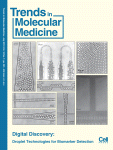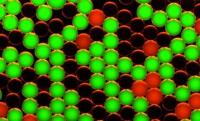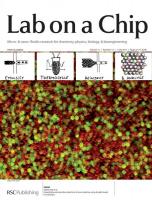News
TRAM People to be presenting in forthcoming conferences (2020).
Valerie Taly in the 4th International Microfluidics Congress in Miami 25-26th of March 2020, US.
Valerie Taly in the Lab-on-a-Chip and Microfluidics Europe 2020, 23-24th of June 2020, Rotterdam, The Netherlands.
Valerie Taly in the Exosomes & Liquid Biopsy Europe, 19-20th October 2020, Rotterdam, The Netherlands.
Valerie Taly in the Genomics Live 2020, 10-12th November 2020, Basel, Switzerland.
2019
Florine Maes, Quentin Jochyms, Jean-Christophe Baret and Valerie Taly have co-founded the start-up emulseo, see https://www.emulseo.com/droplet-surfactant-company-microfluidics-2/
We are part of the EVOdrops Innovative Training Network, funded by a Marie Skłodowska-Curie Action within the EU commission’s Horizon 2020 research and innovation program! See https://evodropseu.wordpress.com/
Roberta Menezes has succesfully defended her PhD! Congratulations to both her!
See the press release concerning our work that was presented in ESMO (September 2019) https://www.aphp.fr/actualite/lap-hp-presente-au-congres-de-la-societe-europeenne-doncologie-medicale-esmo-2019
See the press release concerning the work of Daniel Pietrasz PhD in our laboratory that was presented in the ASCO (June 2019) https://www.aphp.fr/contenu/methylation-de-ladn-tumoral-circulant-et-cancer-du-pancreas-metastatique-une-nouvelle
Deniz Pekin and Valerie Taly Co-edit a special issue of the Micromachines Journal focussing on Liquid Biopsies, see https://www.mdpi.com/journal/micromachines/special_issues/liquid_biopsies
2018
With Yannick Ladeiro we organized the First HTE Program Workshop : Organoïds & 3D cultures (Hospital Saint Louis in the Musée des Moulages, Paris, FR), 16 May 2018!
Valerie Taly is now Editorial Board Member of Scientific Reports (Nature Group)
2017
Access to eDIAG platform website
With Luce Dauphinot we organized the Single Cell Genomics workshop at the ICM institut (Paris, FR), 27-28 june 2017!
V. Taly has been nominated as a member of the CSS6 INSERM commission
2016
Fanny Garlan and Ouriel Caen have succesfully defended their PhD! Congratulations to both of them!
See the press releases of our collaborative work for the paper "Analysis of Base-Position Error Rate of Next-Generation Sequencing to Detect Tumor Mutations in Circulating DNA." Pécuchet N, Rozenholc Y, Zonta E, Pietraz D, Didelot A, Combe P, Gibault L, Bachet JB, Taly V, Fabre E, Blons H, Laurent-Puig P. Clinical Chemistry (2016) (see http://presse.inserm.fr/vers-une-amelioration-du-diagnostic-de-certains-cancers/25239/ , http://www.parisdescartes.fr/Espace-presse/Vers-une-amelioration-du-diagnostic-de-certains-cancers )
Heng Lu (July 2016) has succesfully defended his PhD! Congratulations!
See the press release of our collaborators (team of Dr Y. Rondelez, LIMMS, Univ. Tokyo, https://www.iis.u-tokyo.ac.jp/en/news/2541/) for the paper "High-resolution mapping of bifurcations in nonlinear DNA circuits." A.J. Genot, A. Baccouche, R. Sieskind, N. Aubert-Kato, N. Bredeche, J.F. Bartolo, V. Taly, T. Fujii, Y. Rondelez. Nature Chemistry (2016), 8(8):760-7.
University Paris Descartes, CNRS, INSERM, APHP and UPEC press release in july 2016 (see http://www.biomedicale.parisdescartes.fr/cicb-paris/IMG/pdf/cp_vtaly_vf.pdf , http://www2.cnrs.fr/presse/communique/4625.htm and http://presse.inserm.fr/en/new-findings-from-analysis-of-malignant-tumour-progression/24583/) for our paper "A Study of Hypermethylated Circulating Tumor DNA as a Universal Colorectal Cancer Biomarker. " published in Clinical Chemistry. Authors: . Didelot, D. Le Corre, S. Peyvandi, C. Mulot, R. Niarra, P. Aucouturier, G. Chatellier, P. Nizard, K. Perez-Toralla, E. Zonta, C. Charpy, A. Pujals, C. Barau, O. Bouché, J.-F. Emile, D. Pezet, F. Bibeau, J. B. Hutchison, D. R. Link, A. Zaanan, P. Laurent-Puig, I. Sobhani and V. Taly).
The eDIAG platform has been created in UMRS1147! Contact V. Taly for more information.
2015
Our has been labelized by the Ligue Nationale contre le cancer (click here for the picture of the labelized team)
V. Taly has been nominated as a permanent member of the fwo interdisciplinary panel
2014
Jean-François Bartolo has succesfully defended his PhD! Congratulations!
2013
Deniz Pekin has succesfully defended her PhD! Congratulations!
See http://www.theses.fr/2013STRAF007 for the document.
CNRS INSB and INC press release (see http://www.cnrs.fr/insb/recherche/parutions/articles2013/v-taly.html and http://www.cnrs.fr/inc/index.htm) for our paper "Multiplex Picodroplet Digital PCR to Detect KRAS Mutations in Circulating DNA from the Plasma of Colorectal Cancer Patients." to be published in Clinical Chemistry. Authors: Taly V, Pekin D, Benhaim L, Kotsopoulos SK, Le Corre D, Li X, Atochin I, Link DR, Griffiths AD, Pallier K, Blons H, Bouché O, Landi B, Hutchison JB, Laurent-Puig P).
Editorial in Clinical chemistry : “Digital PCR as a Novel Technology and Its Potential Implications for Molecular Diagnostics.” by Jim Hugget and Alexandra Whale. Clinical Chemistry (2013), 59(12).
Biotechniques article mentioning our work: Getting over qPCR's technical hurdles by Sarah Webb.
2012
Cover page of the theme issue "Soft matter principles of microfluidics." for our article: "Dynamics of molecular transport by surfactants in emulsions." by Skhiri, Y., Gruner, P., Semin, B., Brosseau, Q., Pekin, D., Mazutis, L., Goust, V., Kleinschmidt, F., El Harrak, A., Hutchison, J. B., Mayot, E., Bartolo, J-F., Griffiths, A.D. , Taly, V.* and Baret, J-C.*. 8: 10618-10627. Journal Link.
Cover page of Trends in Molecular Medecine for our invited review: "Detecting Biomarkers with microdroplet technology." by Taly, V.*, Pekin, D., El Abed, A. and Laurent-Puig P. 18(7): 405-16. Pubmed.
2011
Des gouttelettes pour détecter l'ADN tumoral.
Communiqué de Presse CNRS (french)
Liens Université Paris-Descartes (French)
Summary of the project.
Counting fluorescent droplets for the detection of cancer biomarkers
Complex networks of genetic alterations have been highlighted for most cancers. These somatic mutations are present in tumor cells but not in normal cells and can serve as highly specific biomarkers. They represent molecular signatures of cancer cells and thus constitute great tools for early cancer detection, for prognostic assessment, and also for the detection of possible recurrence. The ability to detect such biomarkers would enable to define which patient could benefit from a treatment, and therefore - considering the large number of possible treatment - to treat each patient with the most efficient treatment combination for his own cancer.
Target-oriented treatments have met increasing developments in the last decade and new biomarkers of resistance or sensitivity to such treatments have been described. However, the techniques used nowadays in clinical oncology enable the detection of biomarkers when they represent a fraction of at least 10 % of the normal DNA, while DNA from tumors can be present at less than 0,1% in blood samples. Plain use of the biomarkers in clinical oncology requires then highly sensitive and specific methods to detect them accurately in clinical samples. We considered the case of somatic KRAS mutations, found at high rates in Leukemia, colon cancer, pancreatic cancer and lung cancer; KRAS mutation is a predictive factor of resistance for some therapies and 90% of the activating mutations occur at 7 DNA positions in 2 codons (12 and 13). We have developed an original procedure to quantify the exact fraction of mutant DNA in a biological sample down to 1 KRAS mutant sequence in 200 000 non mutated sequence, where oncologists could not currently detect less than 1 in 10.
This method combines the latest developments of molecular diagnostics with microfluidic manipulation of droplets in microfluidic chips. The droplets have a size of a few microns and are produced and manipulated in microchannels of several tens of microns (smaller than the diameter of an hair). The DNA is partitioned in the microdroplets, with no more than one gene copy per droplet, together with two fluorescent probes: a green one which recognizes the mutated gene, and a red one, which recognizes the normal gene. A droplet containing initially a normal gene will fluoresce in red, a droplet initially containing a mutant gene will fluoresce in green (a droplet containing none will not fluoresce). The simple counting of red and green droplet (which can be automatically done over millions of droplets in microfluidics) gives the ratio of mutants to normal genes. This work has been performed in a collaboration between the Université de Strasbourg, the Université Paris-Descartes, the Max-Planck Institute for Dynamics and Self-organization and the american company Raindance Technologies and could constitute a new paradigm for cancer diagnosis. These tools, protocols and procedures could, for example, be used for appropriate patient management by identifying which patient are more likely to benefit from specific targeted treatment or detecting in a non-invasive way Cancer recurrence in various bodily fluids.
Publication
Quantitative and sensitive detection of rare mutations using droplet-based microfluidics
Deniz Pekin, Yousr Skhiri, Jean-Christophe Baret, Delphine Le Corre, Linas Mazutis, Chaouki Ben Salem, Florian Millot, Abdeslam El Harrak, J. Brian Hutchison, Jonathan W. Larson, Darren R. Link, Pierre Laurent-Puig, Andrew D. Griffiths and Valérie Taly
Lab Chip, 2011, 11, 2156-2166
DOI: 10.1039/C1LC20128J
Cover letter of the journal issue:
See Also
Multiplex digital PCR: breaking the one target per color barrier of quantitative PCR
Qun Zhong, Smiti Bhattacharya, Steven Kotsopoulos, Jeff Olson, Valérie Taly, Andrew D. Griffiths, Darren R. Link and Jonathan W. Larson
Lab Chip, 2011, 11, 2167-2174
DOI: 10.1039/C1LC20126C
Collaboration
Prof. Pierre Laurent-Puig. UMR-S775. Université Paris-Descartes (France)
Prof. Andrew Griffiths, ISIS, University of Strasbourg / CNRS (France)
Raindance Technologies (USA)






